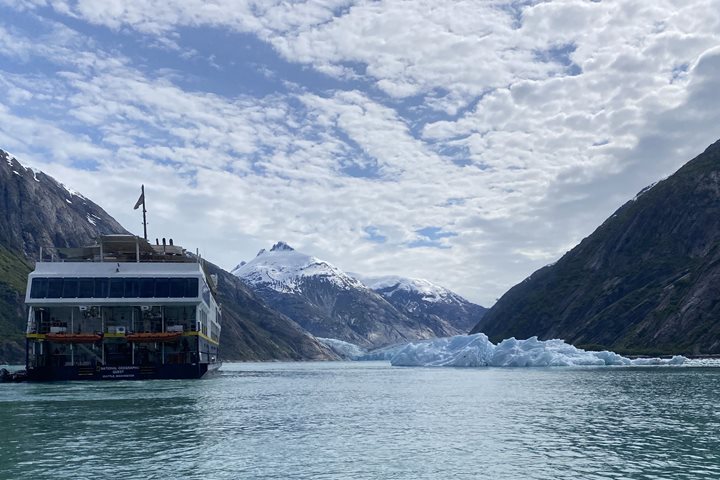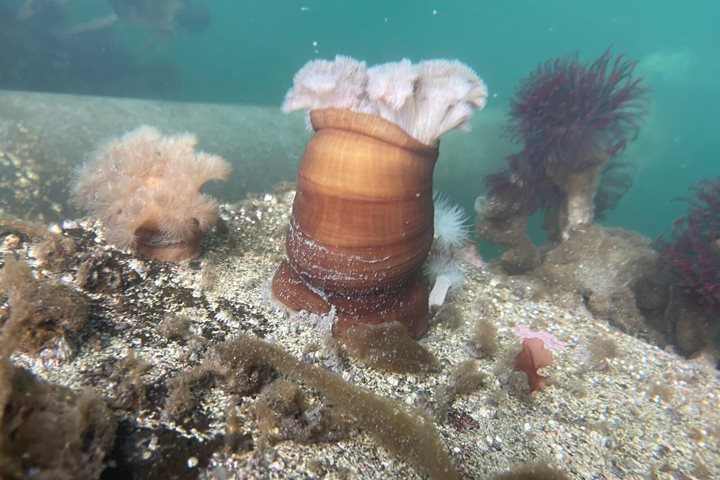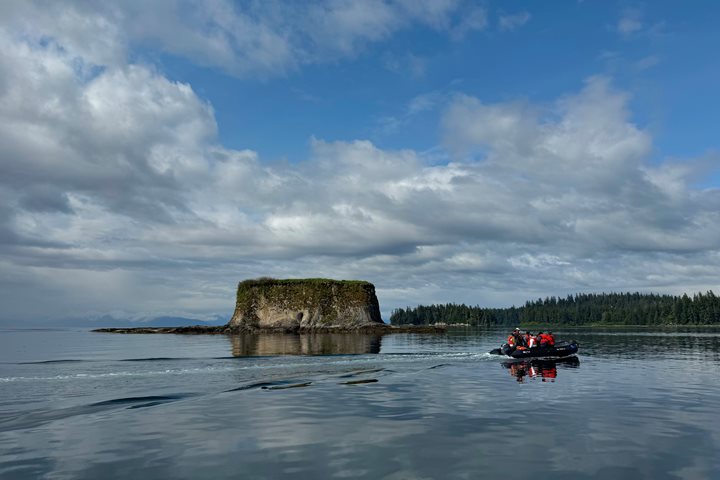The temperate raiforest of Southeast Alaska is one of the wettest environments on earth, with some areas receiving as much as 400 inches of rain a year. Despite the abundant if not unceasing level precipitation, we awoke to a cloudless sky as National Geographic Quest cruised through the waters of Chatham Strait. We took advantage of these conditions and explored the coastlines and forests of Baranof Island for our first full day in Southeast Alaska. From the bow of the ship, we viewed humpback whales and Dall’s porpoises, two of this region’s most remarkable marine species, as they fed on the krill and schooling fish that flourish here in the summer. On land, we hiked through the trails of Lake Eva to view the Sitka spruce, western hemlock, and many understory plants of the temperate raiforest up close.
6/14/2025
Read
National Geographic Quest
Southeast Alaska
On the last full day of our voyage, we woke in Endicott Arm near the Dawes Glacier. We spent the morning enjoying Zodiac tours to the face of Dawes Glacier and watched multiple calving events. We were also able to spot several harbor seals, waterfalls, and a couple harbor porpoises on the way. After lunch we had the opportunity to participate in a polar plunge. Forty people decided to brave the frigid water for a short swim. Those of us not eager to jump into glacier water were able to watch from the bow. After the polar plunge, we warmed up on board as we started transiting towards Juneau. On the way, we stopped at a beautiful waterfall to once again admire the amazing natural beauty of Alaska. During our farewell recap, we were treated to a quick visit by a humpback whale. We ended our day with a slideshow made up of our favorite photos and memories of an amazing week on board National Geographic Quest .







